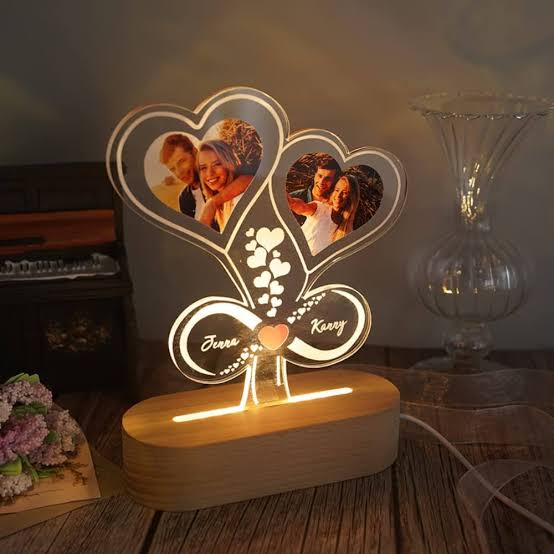
Sustainable Fashion: Embracing Eco-Friendly and Ethical Clothing Choices
Let’s talk about clothes. We all love them, right? Whether you’re a fashion enthusiast or someone who just wants to look good and feel comfortable, clothing is an essential part of our lives.
But have you ever stopped to think about where your clothes come from or the impact they have on the environment? That’s where sustainable fashion comes in—a movement that is changing how we think about what we wear and how it affects the planet.
In this article, let’s dive into what sustainable fashion is all about, why it’s important, and how you can start making more eco-friendly and ethical clothing choices without compromising on style.
What is Sustainable Fashion?
Sustainable fashion is all about creating and consuming clothes in a way that is kinder to the environment and more ethical toward the people who make them. It’s an approach that focuses on minimizing the negative environmental impact of fashion while promoting fairness and transparency throughout the supply chain.
At its core, sustainable fashion is about:
- Eco-Friendly Materials: Using fabrics that are less harmful to the environment, like organic cotton, hemp, or recycled materials.
- Ethical Production: Ensuring that workers are paid fair wages, have safe working conditions, and are treated with respect.
- Reducing Waste: Promoting a circular economy where clothes are reused, recycled, or upcycled rather than being tossed into landfills.
Think of it this way: instead of buying fast fashion that you wear a few times and throw away, sustainable fashion encourages us to buy fewer, high-quality pieces that last longer. It’s about being mindful of the impact our clothing choices have on the world.
Why Does Sustainable Fashion Matter?
You might wonder, “Why should I care?” The truth is, the fashion industry is one of the biggest polluters on the planet. From the massive amounts of water used to grow cotton to the toxic chemicals dumped into rivers from dyeing fabrics, the environmental cost of fashion is staggering. Not to mention the human cost—millions of workers in developing countries are often paid poorly and work in unsafe conditions just to produce the cheap clothes we wear.
By choosing sustainable fashion, we can:
- Reduce Our Carbon Footprint: The production of synthetic fibers like polyester is energy-intensive and relies on fossil fuels. Choosing natural or recycled fibers helps cut down on greenhouse gas emissions.
- Save Water: It takes around 2,700 liters of water to make just one cotton t-shirt. Sustainable brands often focus on using less water and finding innovative ways to recycle and purify it.
- Support Fair Labor Practices: When you buy from ethical brands, you’re supporting companies that treat their workers with dignity and fairness. No one should suffer for the clothes we wear.
How to Embrace Sustainable Fashion in Your Wardrobe
So, how do we make the switch to sustainable fashion without losing our sense of style? The good news is that it’s easier than you think! Here are some practical tips to get you started:
-
Choose Quality Over Quantity
I know it can be tempting to buy a trendy, cheap top for a night out, but think long-term. Invest in quality pieces that are well-made and timeless. These items might cost more upfront, but they’ll last much longer, saving you money in the long run and reducing waste.
-
Shop Secondhand
Thrift stores, vintage shops, and online resale platforms like Poshmark or ThredUp are gold mines for finding unique, stylish clothes at a fraction of the price. Buying secondhand is one of the most eco-friendly things you can do because it keeps clothes out of landfills and reduces the demand for new items.
-
Support Ethical Brands
There are plenty of amazing brands out there that prioritize sustainability and ethics in their production processes. Look for certifications like Fair Trade, GOTS (Global Organic Textile Standard), or brands that are transparent about their supply chains. A few examples include Patagonia, Everlane, Reformation, and People Tree.
-
Rent or Borrow Special Occasion Outfits
Instead of buying a dress or suit you’ll only wear once, why not rent it? Platforms like Rent the Runway and HURR allow you to rent high-end fashion for special events. This way, you get to wear something fabulous without adding to your closet clutter.
-
Care for Your Clothes
How you take care of your clothes can also have a big impact on their lifespan. Simple changes like washing clothes in cold water, line drying, and avoiding overwashing can help keep your favorite pieces looking fresh for years. Plus, fewer washes mean less water and energy consumption!
-
Upcycle and Repurpose
Get creative! Have a t-shirt that’s seen better days? Turn it into a crop top or use the fabric to make something entirely new. Upcycling is a fun way to breathe new life into old clothes, and it’s great for the environment too.
Debunking the Myths About Sustainable Fashion
You might have heard that sustainable fashion is expensive or that it’s only for hippies. But let’s clear that up:
- Myth 1: Sustainable fashion is only for the wealthy.
While some sustainable brands are more expensive, remember that these items are often higher quality and last longer. Also, don’t forget about secondhand shopping, which is both sustainable and affordable. - Myth 2: Sustainable clothes are boring.
Gone are the days when eco-friendly fashion meant beige hemp dresses. Today, sustainable fashion is just as stylish, diverse, and trendy as fast fashion. You’ll find everything from chic minimalistic designs to bold, colorful patterns. - Myth 3: It’s hard to find sustainable fashion.
With more and more brands adopting eco-friendly practices, sustainable fashion is becoming much more accessible. You can easily find ethical brands online or even at your local mall.
FAQS
What is eco-friendly or sustainable fashion?
Eco-friendly or sustainable fashion refers to clothing and accessories made in ways that minimize harm to the environment. This includes using sustainable materials, ethical production methods, and reducing waste.
What is ethical and sustainable fashion?
Ethical and sustainable fashion combines environmentally friendly practices with fair labor conditions. It ensures that the people making the clothing are paid fairly and work in safe conditions, while also focusing on reducing environmental impact.
How can fashion be environmentally sustainable?
Fashion can be sustainable by using eco-friendly materials (like organic cotton or recycled fabrics), reducing waste in production, avoiding harmful chemicals, and encouraging slow fashion, which promotes buying fewer, higher-quality items.
What are the 7 Rs of sustainable fashion?
The 7 Rs of sustainable fashion are: Reduce, Reuse, Recycle, Repair, Repurpose, Refuse, and Rethink. These principles guide consumers and brands to minimize environmental impact.
What is an example of sustainable clothing?
An example of sustainable clothing is a T-shirt made from organic cotton, dyed with natural dyes, and produced by a brand that pays fair wages and uses eco-friendly packaging. Brands like Patagonia and Everlane focus on these practices.
Conclusion
Sustainable fashion isn’t about being perfect or overhauling your entire wardrobe overnight. It’s about making conscious, informed choices whenever possible. Whether you decide to buy less, shop secondhand, or invest in ethical brands, every small change adds up to make a big difference.
So, the next time you’re shopping, ask yourself: Who made my clothes? How were they made? And what impact will they have on the environment? These questions can guide you toward embracing a more sustainable and ethical approach to fashion—one that not only looks good but feels good too.
Let’s all take a step toward a more eco-conscious wardrobe and help make fashion a force for good!





